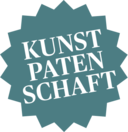Helm: Skanderbeg-Helm
wohl 2. Hälfte 15. Jahrhundert, Besitzer: Georg Castriota gen. Skanderbeg zugeschrieben
Skanderbeg-Helm
This helmet is mentioned for the first time in the 1593 inventory of the collection assembled by Ferdinand II, Archduke of Austria, at Ambras Castle near Innsbruck: ‘the helmet of George Skanderbek and two swords’ (Georgen Scanderbegg Helmlin und zwaj Schwerter). In the 1596 inventory of Ferdinand’s estate, it is listed as ‘George Skanderbek: a white helmet with gilt hoop, surmounted with the gilt head of a horned goat, and two swords’ (Geörg Scanderbegg; Ain weiss helmblin mit verguldten raifen, darauf ein verguldter gaiskopf mit seinen hörnern, und zwai Schwerter).
In the mid-fifteenth century, Gjergj Kastrioti (commonly known as Skanderbeg) led a rebellion against the Ottoman Empire in the Albanian highlands around Krujë. After his death, his deeds were widely celebrated, and he was included in the Armoury of Heroes assembled at Ambras Castle. This was Ferdinand’s collection of arms and armour made for and worn by celebrated rulers and generals, both his contemporaries and from earlier generations; he displayed them together with objects attributed to these ‘heroes’ or dating from their lifetimes.
The helmet remained at Ambras until 1806, when it was moved to Vienna during the Napoleonic Wars. From 1814 onwards, it was on show to the public as part of the Ambras collection, then displayed at Lower Belvedere Palace; in 1889, the collection – with the helmet – moved to the newly erected Kunsthistorisches Museum.
The helmet comprises a steel skull that is actually a fragment of an Italian sallet. The helmet’s jagged edge was already concealed under a riveted leather band when it was in Ferdinand’s collection. The inscription (in minuscule and divided by six flower rosettes) on the circumferential band reads inperatorebt, and a copper plate with a decorative border surmounted with the head of a goat made of gilt sheet copper was added to the helmet. The goat’s eyes were originally inlaid with coloured glass or stones.
Objektdaten
Objektbezeichnung
Helm
Kultur
Italienisch
Datierung
wohl 2. Hälfte 15. Jahrhundert
Besitzer
Georg Castriota gen. Skanderbeg zugeschrieben (1404 - 1468) - GND
Material/Technik
Helm: Eisen, geschmiedet, getrieben. Zierreifen: Kupferblech, graviert. 1 Rosette: Kupferblech, teils feuervergoldet, teils graviert. 1 Nietkopf: Kupfer, getrieben, teils punziert, feuervergoldet. 5 Rosetten: Messingblech, feuervergoldet, teils graviert. 5 Nietköpfe: Messing, feuerversilbert. Kupferdraht, feuervergoldet, gekordelt. Dekorleiste: Kupferblech, feuervergoldet, teils gesägt, teils ziseliert. Leder. Zierkappen: Messing, feuervergoldet. Helmzier: Kupferblech, feuervergoldet, getrieben, teils ziseliert, teils punziert, teils graviert. Dekorleiste: Kupferblech, feuervergoldet, teils gesägt, teils ziseliert.
"
Maße
H 34,5 cm x B 20 cm x T 42,5 cm
Gewicht 3,00 kg
Beschriftung
Zwischen den Rosetten auf schraffiertem Grund in gotischer Bandminuskel die Inschrift: “in/pe/ra/to/re/bt”
Bildrecht
Kunsthistorisches Museum Wien, Hofjagd- und Rüstkammer
Inv. Nr.
Hofjagd- und Rüstkammer, A 127
Permalink (zitierbarer Link) zu dieser Seite: www.khm.at/de/object/371645/
Kunst & Patenschaft
Viele unserer Objekte sind auf der Suche nach Paten. Mit einer Kunstpatenschaft tragen Sie dazu bei, die Schätze der Kunstgeschichte für die Zukunft zu bewahren.
Als Kunstpate fördern Sie mit Ihrer Spende direkt und nachhaltig die wissenschaftliche Dokumentation, Erforschung, Restaurierung und Präsentation der Kunstbestände des Kunsthistorischen Museums Wien.

